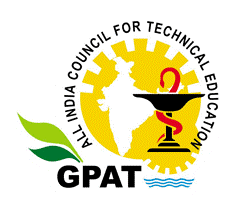

Graduate Pharmacy Admission Test G.P.A.T. pharmacy entrance examination previous years question paper with answer key and solution.
The All India Council for Technical Education (AICTE) conducts the Graduate Pharmacy Admission Test (GPAT) national level entrance exam for aspirants interested in making their career in Pharmacy. If you plan to appear for this pharmacy entrance exam, try solving as many GPAT previous year papers and mock tests as you can. If you practice questions from these GPAT last year question papers, you will get an idea about the exam difficulty level and the question trend. Let us have a look at the exam pattern of the Graduate Pharmacy Admission Test (G.P.A.T.) exam to get a better understanding of the paper.
Preparing from the previous papers will help to know the type of questions that the GPAT exam officials usually like to ask in the exam. This will allow you to be prepared for such types of questions. Given below is the table that contains details about the GPAT Previous Years Papers with Solutions and the answer key is given at the end of the question paper.
Along with the solved question paper of GPAT, you must have full knowledge about the GPAT exam. A total of 125 questions will be asked in the GPAT exam. Check the subject-wise weightage below. Aspirants can check the GPAT question paper pattern from the table mentioned below.
| Types of questions | Number of questions | Maximum marks |
|---|---|---|
| Pharmaceutical Chemistry | 38 | 152 |
| Pharmaceutics | 38 | 152 |
| Pharmacognosy | 10 | 40 |
| Pharmacology | 28 | 112 |
| Other subjects | 11 | 44 |
|
Total |
125 |
500 |
| Marking Pattern | Marks |
|---|---|
| Marks for each correct answer | +4 marks awarded |
| Marks for each incorrect answer | -1 marks deducted |
| Marks for each unattempted questions | 0 marks |
| Total number of questions | 125 questions |
| Total marks | 500 marks |
| Section | Unit |
|---|---|
| PHYSICAL CHEMISTRY | Composition & physical states of matter, Colligative Properties, Thermodynamics, Refractive index, Solutions, Electrochemistry, Ionic equilibrium, Kinetics |
| PHYSICAL PHARMACY | Matter, properties of matter, Micromeritics and powder rheology, Surface and interfacial phenomenon, Viscosity and rheology, Dispersion systems, Complexation, Buffer, Solubility |
| ORGANIC CHEMISTRY | General principles, Different classes of compounds, Protection & deprotection of groups, Aromaticity & chemistry of aromatic compounds, Different aromatic classes of compounds, Polycyclic aromatic hydrocarbons, Stereochemistry, Carbohydrates, Carbonyl Chemistry, Heterocyclic Chemistry, Protection & deprotection of groups, Bridged rings, Kinetic & thermodynamic control |
| PHARMACEUTICAL CHEMISTRY | Pharmaceutical Impurities, Monographs, Isotopes, Dentifrices, desensitizing agents, & anticaries agents, Therapeutic classes of drugs, Various classes of therapeutic agents, Different classes of therapeutic drugs, Different classes of therapeutic drugs |
| PHARMACEUTICS | Pharmacy Profession & Introduction to Pharmaceuticals, Introduction to dosage form, Biological products, Pharmaceutical Plant, location, layout, Ophthalmic preparations, Preformulations, Packaging Materials, Cosmetics, Pilot plant scale-up techniques, Dosage Form Necessities and Additives, Powders, Sources of drug information, Tablets, Parenteral - product requiring sterile packaging, Suspensions, Emulsions, Suppositories, Stability of formulated products, Prolonged Action Pharmaceuticals, Novel Drug delivery system, GMP and Validation, Semisolids, Allopathic dosage form, Crude extract, Allergenic extract, Capsules, Liquids(solutions, syrups, elixirs, spirits, aromatic water, liquid for external uses), Pharmaceutical Aerosols |
| PHARMACOLOGY | General Pharmacology, Principles of toxicology, Drugs acting on urinary system, Pharmacology of peripheral nervous system, Pharmacology of central nervous System, Pharmacology of cardiovascular system, Immunopharmacology, Drugs acting on Respiratory system, Pharmacology of Endocrine system, Neurohumoral transmission in autonomic and central nervous system, Vitamins & Minerals, Chemotherapy, Autacoids and their Antagonists, Pharmacology of drug acting on the gastrointestinal tract, Chronopharmacology |
| PHARMACOGNOSY | Introductory Pharmacognosy, Classification of crude drugs, Plant products, Principles of plant classification, Pharmaceutical aids, Animal products, Traditional herbal drugs, Plants based industries and research institutes in India, Patents, Ayurvedic system of medicine, Homeopathic system of medicine, Toxic drugs, Enzymes, Natural pesticides and insecticides, Adulteration and evaluation of crude drugs, Quantitative microscopy, Factors influencing quality of crude drugs, Techniques in microscopy, Introduction to phytoconstituents, Biogenetic pathways, Carbohydrates & lipids, Tannins, Volatile oils, Resinous drugs, Glycosides, Alkaloids, Extraction and Isolation Techniques, Phytopharmaceuticals, Quality control and Standardization of herbal drugs, Herbal formulations, Worldwide trade of crude drugs and volatile oils, Herbal cosmetics |
Download GPAT 2023 official Syllabus - Download GPAT Syllabus 2023
Students who work hard to crack GPAT (Graduate Pharmacy Admission Test) should try to solve all the questions in the GPAT previous year question papers within the set time limit. This practice of Time Management is recommended for the D-day so that he/she can evaluate his/her strengths and weaknesses in the subject. You should try to solve the previous year GPAT question paper on your own in the original exam duration which will boost take your confidence to another level and will help to score good marks in Graduate Pharmacy Admission Test. This real-time exam feeling also helps to get habituated to solve the question in fixed time frames.
This GPAT Sample paper taken from: gpat.nta.nic.in